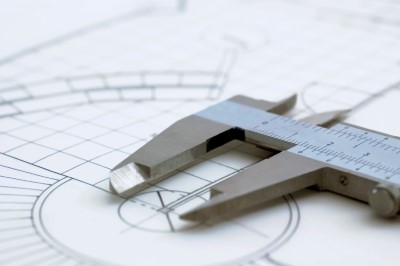Consider building a swing with two ropes tied to a tree branch hanging down to a board to sit on. Do both ropes need to be cut exactly the same length? Not really. Not exactly. If one side is a quarter of an inch shorter than the other, no one will likely notice and the swing will function just fine. Now consider building the average car engine. Part of what makes it work involves a piston moving up and down through a cylinder. How exact does the fit need to be between the piston and the cylinder? The short answer: A lot more exact than the rope swing example!
Not only does the piston/cylinder need to endure massive pressure and temperature changes, but it also needs to be machined together in such a way as to contain a gas/air explosion that violently drives the piston down through the cylinder. It needs to do this reliably and consistently, all the while in a perfect high speed synchronous dance with other engine parts. The number of up and down movements that the piston will experience in one trip to the grocery store far exceeds the number of swings a rope swing will ever see in a lifetime.
Many engine parts complete their function an average of 3000 to 5000 times a minute. So, any imperfections in fitting or design will quickly reveal themselves. Think of it this way: If a feather glances your ear as a bird flies by, you will remain unharmed and perhaps even enjoy the experience. However, if 5000 birds should glance upon the same spot on the same ear in under a minute…well…that's a horror movie.
The same concept applies in mass production. Often a tool or mold is created that will in-turn be used to manufacture many other parts. If the original tool or die is off the required specification, then the millions of parts stamped out that day will also be off the required specification.
Many of these specifications require measurements so fine that the human eye cannot tell the difference between accurate and inaccurate. As even a little friction can begin a path to catastrophic failure, special devices and methods are needed to reach accurate specifications.
These devices in turn need to be calibrated. Proper calibration guarantees a particular instrument is credible in measuring to the specifications for which it is rated. What is calibration? It is simply a comparison between measurements. One of these measurements needs to be a recognized standard and the other measurement needs to conform to that standard. A device is considered properly calibrated when there is an unbroken record tracing back to a legitimate standard. This way everyone can agree exactly what an inch is.
Where are these standards? Many countries have a dedicated Institute that maintains these physical and electronic standards. Examples of government agencies that keep and maintain measurement standards include the National Physical Laboratory, UK (NPL) the National Institute of Standards and Technology (NIST) in the USA, the Physikalisch-Technische Bundesanstalt (PTB) in Germany, and the Istituto Nazionale di Ricerca Metrologica (INRiM) in Italy.
When measuring with a properly calibrated device, the exact same measurements are reproduced and used in different assembly lines, in different factories and in different countries. Staying true to a traceable standard enables, for example, parts to be manufactured in Germany, assembled in China and serviced in the USA without conflict. These worldly parts are able to dance the synchronous dance without stepping on any toes because they all move to the beat of the same standard.
CED Technologies, Inc. has engineers with industry experience in manufacturing and precision tools.
Featured Engineer: Thomas Hannon, P.E., Mechanical Engineer






